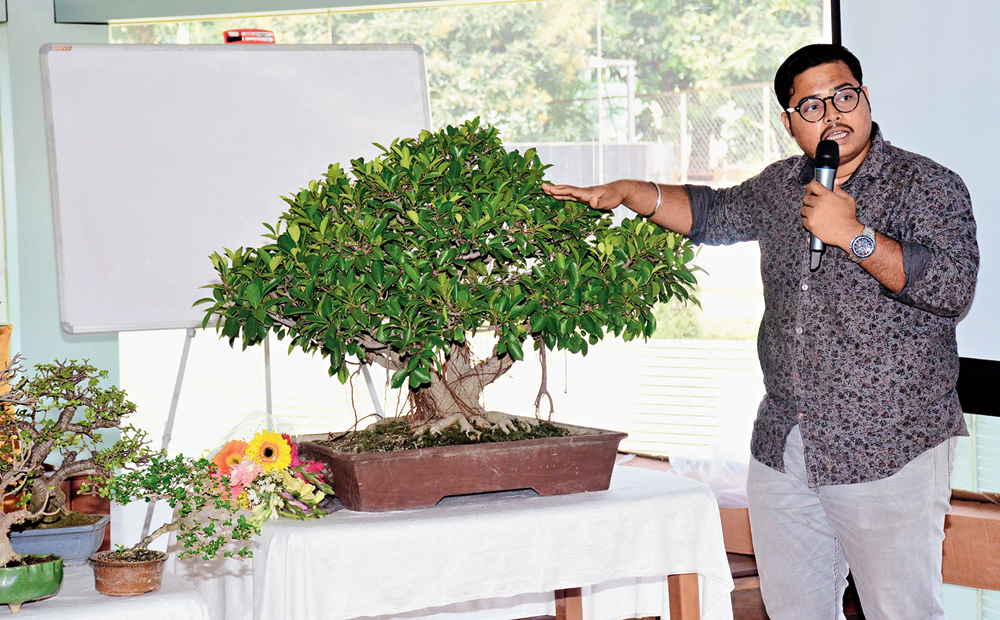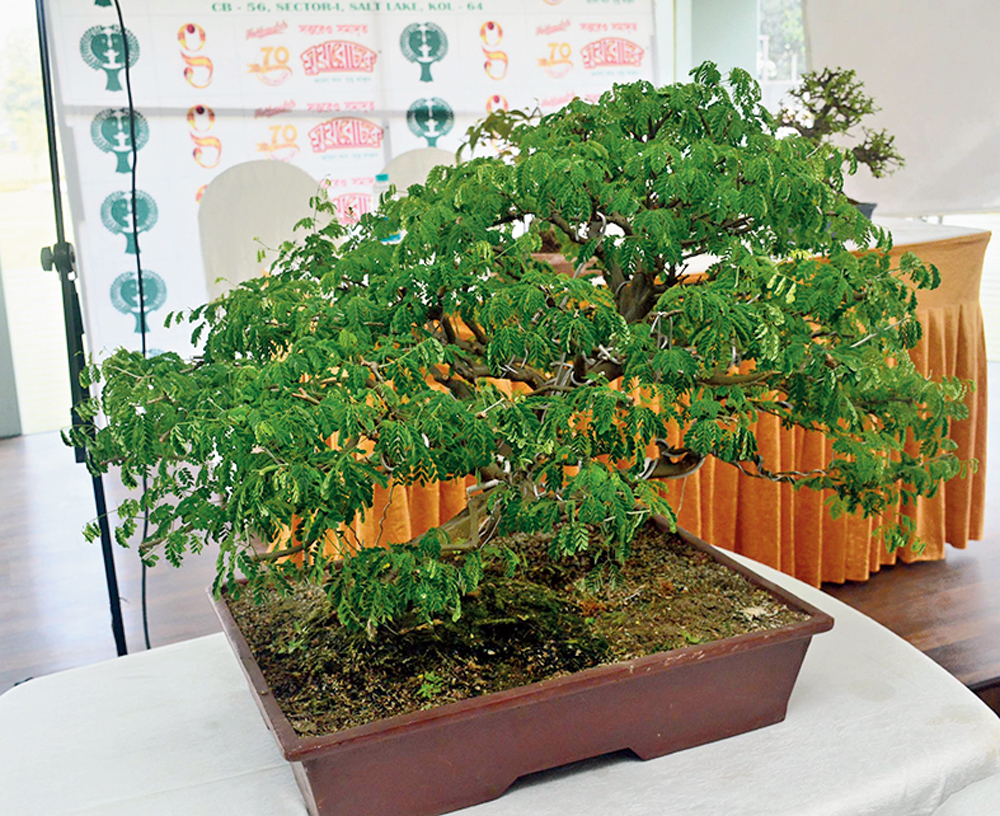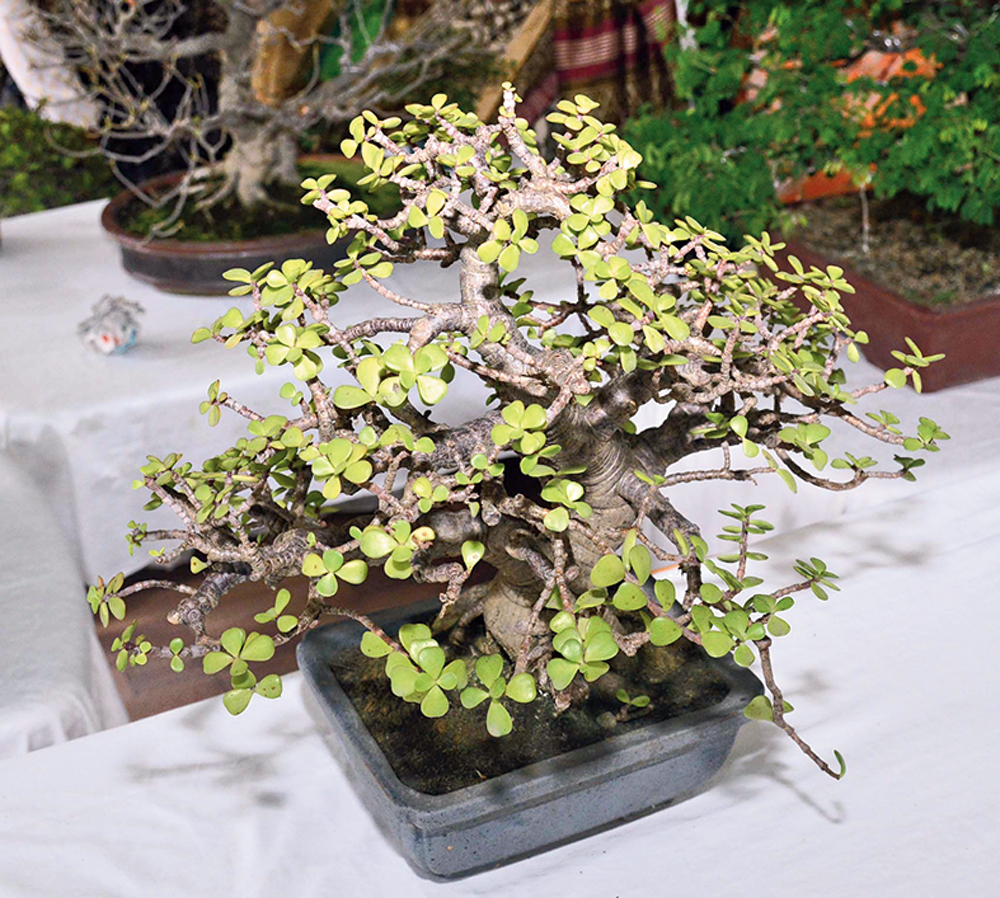Does the gardener assume the role of god when he interrupts the natural growth of a tree and makes it a bonsai? This was the topic of discussion at the glass house in BE Block’s green verge, organised by Bidhannagar Horticultural Society.
Member Saumitra Maiti recounted a short story Bonsai der golpo, where author Buddhadeb Guha had conveyed the emotions of a bonsai Banyan tree. “If I grew in the wild, I’d have sprawling branches where birds would build nests and under which people would sit for shade. But as a bonsai I am restricted, like Chinese women in the olden days with bound feet,” Maiti read out from the story.
The society, in fact, had invited Guha to the meet but having fallen ill, the author could not make it.
Other speakers, however, did not feel bonsai-making to be cruel. “Look at the bonsai specimens here today. Do they look sad? They are growing just as they would in nature,” showed Krishna Chakraborty, a member from FE Block.
“Some 30 years ago, I had picked up an Ashwattha sapling from a sandy corner of Karunamoyee. I rescued it and nurtured it into a bonsai and many more plants have grown out of it down the years. Sometimes I feel like taking the mother plant back to Karunamoyee to show it its birthplace,” smiled Chakraborty. “With my children living away, these plants are my companions and my inspiration to live. That can’t be a cruel thing. Bonsai is life; it is art.”

A Ficus Retusa, being explained by Gourab Majumdar at BE Block Picture by Saradindu Chaudhury
Another member, Achyut Ghosh, shared pictures of a bonsai park called Spirited Garden that he visited in South Korea.
Guest speakers Gourab Majumdar and Suparun Pal came from a group called Bengal Bonsai. “Storms, tides, lightening…nature has its way of re-shaping trees. With bonsais we are doing the same with wires and scissors,” said Majumdar. “Also, we cannot say it’s cruel as plants are capable of cell division. If a person’s finger is cut off it won’t grow back but a branch will.”
The beauty of plants is not just in flowers, he said. “Flowers are seasonal. They are not the definition of beauty; they are a bonus,” said Majumdar, asking the audience to use trees as a means of expressing themselves.

A specimen of a Brazilian Rain Tree Picture by Saradindu Chaudhury
He spoke of wabi-sabi, a Japanese concept that appreciates both positive and negative beauty. “While one might find a slim, fair lady elegant, there is much to admire in a dusky, athletic lady too. Similarly a bonsai artiste can use deadwood and hollow trunks to bring out the beauty of a frail, bent, old tree. He could show twin trunks in the same pot, symbolising a husband and wife. The husband could be slightly taller and older and both would be spreading to their respective sides yet rooted close by.”
Majumdar also busted the myth that bonsais can only be performed on Banyan and Pakur. “I made it a point to get a Jade plant bonsai today to show you that one can always start with easy-to-grow plants. Back in the day, Indians followed Japanese and Chinese bonsai books, where they only worked on winter coniferous trees. Those don’t grow in Calcutta. The trend now is to following tropical patterns from places like Indonesia, Taiwan and the Philippines that are successfully creating bonsais with wide-canopied tropical trees.”

Pakur in bonsai form Picture by Saradindu Chaudhury
Another speaker duo was Anal and Sumitra Ghosh, who teach the art of bonsai-making at the Agri-Horticultural Society of India, among other places. “Legend has it that a beggar in China once spotted a tree in a street corner. It was very balanced aesthetically but was malnutritioned. He picked it up and put it in his begging bowl. And thus was born the world’s first bonsai,” said Anal.
“Unlike art forms like painting and sculpting, bonsais are not permanent. You can and must always keep changing its form as the plant keeps growing,” said his wife Sumitra. “And unlike in people, the attempt with bonsais is to make them appear older, not younger.”
The couple laid out some pointers for bonsai-making-
- Round or square pots do not flatter bonsais. Try to look for rectangular or oblong-shaped pots.
- Do not choose a pot too big or small in size. Keep it in balance with the size you want to maintain for the plant.
- Do not choose glazy pots as attention will shift to the pot instead.
- For the bonsai, choose a healthy plant that has small leaves and flexible branches as wiring and the same has to be done on it.
- Decide the front face of the tree and work accordingly.
- Leave some space in front of the pot so it looks as if the tree lies on a meadow.











